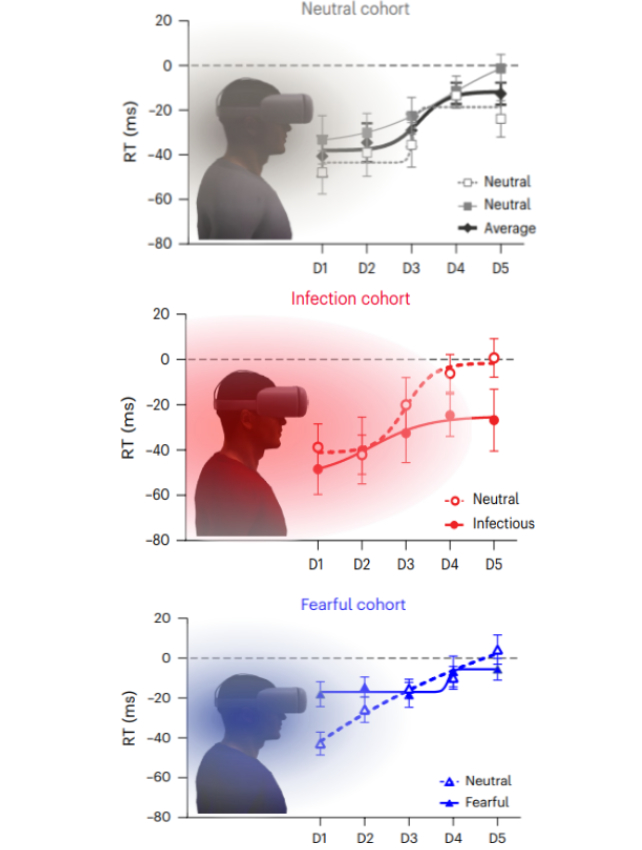The mere sight of a sick person may set off an alarm system in your brain and body, even if they are too far away to infect you.
A series of experiments using virtual reality headsets has now revealed just how "exquisitely sensitive" our brains are to symptoms of sickness.
When participants saw a virtual avatar at varying distances showing clear signs of illness (like a feverish rash), their brains suddenly kicked into gear and their immune systems were put on high alert.
When they saw a healthy, neutral-looking avatar, on the other hand, their brains did not show the same activation patterns, and their bloodwork lacked an immediate elevation in immune markers.
Related: The Mere Thought of Being Hungry Could Alter Your Immune System
Some of these markers are known as innate lymphoid cells (ILCs). ILCs can spike in the blood when the body is directly exposed to a pathogen, but all it took in this case was the sight of a virtual infection and the mere prospect of exposure.
"Together, these data show that ILCs react to infections not only when they are detected in the body but also when they are processed as a potential threat approaching the body," write the international team of authors, led by immunologist Sara Trabanelli from the University of Lausanne in Switzerland.

When researchers used machine learning to statistically analyze the results of their experiments, they found that the brain's threat-detection activity could largely explain the immune response.
After seeing a virtual sick person at a distance, the brains of participants lit up in a unique pattern, which was not seen when the avatar had a fearful expression or a neutral expression.
The sick avatars that were furthest away elicited the strongest response from the brain's network. Interestingly, some of these activated areas are the same as those that can be triggered after a flu vaccine is given.
The findings suggest that when the brain senses a looming threat, it responds rapidly, triggering activity in brain parts like the hypothalamus, which then communicate with the immune system.
This gives the body time to put up a fight.

The recent experiments took place among 248 healthy adults in total, and in one of the trials, participants wearing VR were asked to press a button when they felt a touch on their face.
When their VR sets featured a virtual sick person, participants pressed the button faster upon feeling the touch than when they saw a neutral or fearful avatar.
This suggests that their brains are primed because of the sight of sickness. The anticipation probably evolved as a fight-or-flight response, the researchers suspect, though they caution there's still a lot to resolve, including how perceived infectiousness and disgust interact.
"These findings suggest an integrated neuro–immune reaction in humans toward infection threats, not solely following physical contact," conclude the authors.
Thanks to our brains for staying vigilant on our behalf.
The study was published in Nature Neuroscience.
